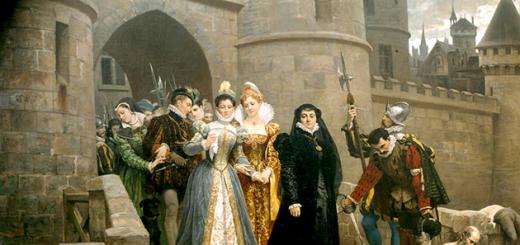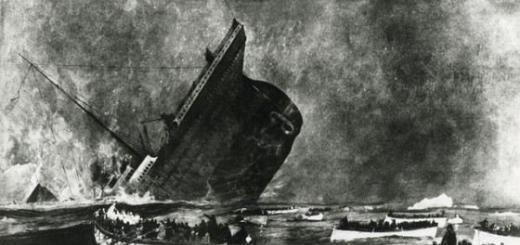World War I became a war where the latest tactics and types of weapons coexisted with archaic, proven centuries, and sometimes millennia, types of weapons and methods of destroying the enemy. So, in one place there was a dashing cavalry attack with peaks, in another hand-to-hand combat, and very close to the trenches a yellow cloud of poisonous gas or an armored monster armed with cannons and machine guns was advancing ... But more often everything was intertwined together, embodied in strange hybrids of the old and the new . Such as bulletproof armor-transformers or catapults for throwing hand grenades. However, many of these inventions were the product of people who have experienced all the "charms" of a new type of war.
But for those who were far from the front line, confusion reigned in their heads. And very many of them continued to believe that war is a slender column of stately grenadiers marching to the drum and flute, from time to time issuing a coordinated volley in the direction of the enemy ... they considered very innovative, tried to help the front.
As usual, in the forefront were active amateurs and self-taught inventors. Hundreds of rationalization proposals filled up the Main Military-Technical Directorate (GVTU) of the Imperial Army. Representatives of all classes and social strata of society sent their projects: from peasants to professional engineers. Many really sensible, interesting proposals were made, but there were also such that one could only envy the endurance and patience of the officers of the GVTU. After all, in addition to studying the invention, they were obliged to send their conclusion to the author by mail, made in a polite and correct form.
"Pulehod" Shovkoplyas
This machine was a huge bullet on wheels or, alternatively, on rollers, containing many soldiers. A machine gun of an outlandish multi-barrel design stuck out of the back wall of the miracle machine and poured a hail of bullets at the enemy. Why from the back? Apparently because, according to the author of the project, a peasant of the Yenisei province Roman Ivanovich Shovkoplyas, it was impossible to stop his “bullet-walker”. Having easily overcome the enemy's fortifications, this machine will leave enemy soldiers far behind it, and this is where the machine gun will begin its work. Roman Ivanovich did not trouble himself with the issues of the arrangement of the running base and the characteristics of the engine for the “bullet-walker”, as well as the system of the infernal multi-barreled super-machine gun.
Nevertheless, even such inventions were considered, and the official conclusion of the competent commission came to the author by mail. Only in the last years of the war, the GVTU shifted the costs of postal correspondence to the authors of rejected projects.
Barrel mitrailleuse "Volcano" Sukhmanov
Under the glamorous name was an ordinary lightly armored barrel, which was moved by soldiers running inside the barrel according to the “squirrel in a wheel” principle. On the sides of the barrel, loopholes were implied, from which the unfortunate on the run could conduct deadly fire. The barrel was supposed to crush the insane, and, apparently, previously immobilized enemy soldiers. It’s even scary to imagine the fate of the crew of the Vulkan mitrailleuse if it rolled down a slope ... However, even the most numerous and close-knit team would hardly be able to move a heavy barrel from its place.
Judging by the specifics of the proposed projects, the rear inventors continued to see the enemy hordes in the form of stationary tin soldiers built in even rows.
Skroznikov's ice rink
Pavel Skroznikov, a peasant from the Arkhangelsk province, proposed attacking the enemy with vehicles equipped with heavy rollers and destroying him, actually rolling him into the ground. Apparently, the inventor was sure that the German soldiers were not able to step aside from his combat “asphalt paver”. Pavel Skroznikov became one of the first authors from whom the experts of the State Higher Technical School demanded compensation for postage.
There was a project for an armored car, which, like a combine harvester, mowed down enemy infantry around it with special spinning sickles, and cut off wire obstacles with a retractable circular saw. An armored car project was also proposed for consideration, which, through special nozzles located along the perimeter of the body, spewed flames around itself. This was necessary in order to scare enemy soldiers crawling from all sides from the car ... 
"Batt" Lebedenko
Standing apart in this row is the famous Lebedenko tank, also known as the Bat, also known as the Tsar Tank. The wheeled combat vehicle was a kind of old gun carriage with two huge wheels 9 meters in diameter and an armored hull 12 meters wide located between them. This monster moved by means of two autonomous Maybach engines, taken from a padded German airship. The crew of the vehicle consisted of 15 people serving two cannons and several machine guns. The design speed of the monster was supposed to be about 17 kilometers per hour.
The author of the project managed to get through to an appointment with the sovereign-emperor himself. He brought a wooden model of his car with him to the Winter Palace. The clockwork model rushed along the parquet of the palace, famously jumping over obstacles collected from volumes of books from the sovereign's library. The king was fascinated watching the tricks of the Tsar-tank. As a result, the Lebedenko project received state funding.
Quite quickly, at a secret training ground near Moscow in the area of \u200b\u200bthe modern Orudyevo station of the Savelovsky direction, at the end of the summer of 1915, a prototype of a unique combat vehicle was created. After driving a few meters, the device got stuck in a swamp, from where even the most advanced tractors for that time could not pull it out. There he stood, overgrown with birch trees, until the mid-twenties, until he was dismantled for scrap. Until now, there are rumors that among the forests you can trace a wide track pressed into the ground ... 
If Lebedenko's car had not sat down tightly in the Dmitrovsky swamps, then one could only envy the German artillerymen, who would have enjoyed honing their accuracy at such a vulnerable and extraordinary target. Nevertheless, it was the world's largest armored land combat vehicle ever built.
Epicycloid "Wallpaper"
However, a truly demonic invention can be considered the triumph of a gloomy genius: a machine-destroyer of fortresses, the epicycloid "Wallpaper" of the Lviv engineer Semchishin. His invention, born of unprecedented dilettantism and unwavering faith in the size and inexhaustibility of the Russian military budget, strikes the imagination even after a hundred years.
"Wallpaper" was a huge ellipsoid measuring 605 meters in height (the Ostankino TV tower in Moscow has a height of only 540 meters) and 900 meters in length. Moving at a cruising speed of about 300 kilometers per hour, he had to wipe out enemy fortresses, jump over rivers and mountains, while laying a convenient track for the advancement of troops. Having started on the border of the Russian Empire, the epicycloid was supposed to tamp down Berlin in a few hours. 
The body of a huge egg-shaped structure was made of hardened steel with a thickness of only 100 millimeters. The machine was set in motion by means of steam engines located inside the apparatus and raising an eccentric flywheel, thanks to which the machine rolled over the ground. The crew, consisting of several hundred people, got inside through hatches located on the axis of rotation, climbing to a height of 300 meters along rope ladders (!). Apparently in the same place, on the axis of rotation, the weapons of the supergiant should have been located.
Naturally, the project of Semchishin's epicycloid was not accepted by the GSTU. At least for the simple reason that such a monster would simply collapse under its own weight during the assembly process. 
Taser, dove bomb and glue gun
But the inventors of the GVTU officers were surprised not only by the scale. Thus, a project of a glue gun was submitted to the commission for consideration, which, according to the author’s intention, was supposed to fill enemy soldiers with glue until they were completely immobilized by sticking members and sticking weapons and other objects to them.
Also interesting are the stun gun of mass destruction, which was a water cannon, pouring water on the enemy’s trenches and then firing high-voltage electrodes there, and a pigeon-bomb with a fixed tail to fly only in a straight line ...
There were some really promising proposals. For example, a projectile that sprays a cloud of flour with its subsequent explosion is a prototype of a vacuum bomb, or a clockwork drone for delivering bombs to areas of fortifications inaccessible to artillery.
But there were also proposals, the implementation of which would lead, if not to the end of the world, then at least to a local catastrophe. Avdeev, an engineer from St. Petersburg, proposed to create and launch a cloud of chlorine with a diameter of 40-50 versts into the wind at the enemy ...
One way or another, but a new type of war gave rise to new ideas, and one can only rejoice that most of them have remained projects.
French trench armor against bullets and shrapnel. 1915
Sappenpanzer appeared on the Western Front in 1916. In June 1917, after capturing some German body armor, the Allies conducted research. According to these documents, the German body armor can stop a rifle bullet at a distance of 500 meters, but its main purpose is against shrapnel and shrapnel. The vest can be hung both on the back and on the chest. The first samples assembled were found to be less heavy than later ones, with an initial thickness of 2.3 mm. Material - an alloy of steel with silicon and nickel.



Such a mask was worn by the commander and driver of the English Mark I to protect their faces from shrapnel.

Barricade.

German soldiers try on the captured Russian "mobile barricade".

Mobile infantry shield (France).

Experimental helmets for machine gunners. USA, 1918

USA. Protection for bomber pilots. Armored pants.

Various options for armored shields for police officers from Detroit.

An Austrian trench shield that could be worn as a breastplate.




Teenage Mutant Ninja Turtles from Japan.


Armored shield for orderlies


Individual armor protection with the uncomplicated name "Turtle". As far as I understand, this thing did not have a “sex” and the fighter himself moved it.

Shovel-shield McAdam, Canada, 1916. Dual use was supposed: both as a shovel and a shooting shield. It was ordered by the Canadian government in a series of 22,000 pieces. As a result, the device was uncomfortable as a shovel, uncomfortable due to the too low location of the loophole as a rifle shield, and was pierced through by rifle bullets. After the war, they were melted down as scrap metal.

I could not pass by such a wonderful stroller (though already post-war). UK, 1938

And finally, "an armored cubicle of a public toilet - pepelats." Armored observation post. United Kingdom.

It's not enough to sit behind a shield. To "pick out" the enemy from behind the shield with what? And here “the need (soldiers) are cunning for inventions ... Quite exotic means were used.
French bomber. Medieval technology is in demand again.


Well, quite ... a slingshot!

But they had to be moved somehow. Here the engineering and technical genius and production capacities again entered into operation.
An urgent and rather stupid reworking of any self-propelled mechanism sometimes gave rise to amazing creations.

On April 24, 1916, an anti-government uprising broke out in Dublin (Easter Rising - Easter Rising) and the British needed at least some armored vehicles to move troops along the shelled streets.
On April 26, in just 10 hours, specialists from the 3rd Reserve Cavalry Regiment, using the equipment of the workshops of the Southern Railway in Inchicore, were able to assemble an armored car from an ordinary commercial 3-ton Daimler truck chassis and ... a steam boiler. Both the chassis and the boiler were delivered from the Guinness Brewery

You can write a separate article about armored railcars, so I’ll just limit myself to one photo for a general idea.

And this is an example of the banal hanging of steel shields on the sides of a truck for military purposes.

Danish "armored car", based on the Gideon 2 T 1917 truck with plywood armor(!).

Another French craft (in this case in the service of Belgium) is the Peugeot armored car. Again, without protection for the driver, engine, and even the rest of the crew in front.


And how do you like this "aerotachanka" from 1915?

Or like this...
1915 Sizaire-Berwick "Wind Wagon". Death to the enemy (from diarrhea), the infantry will blow away.

Later, after WW1, the idea of an air cart did not die out, but was developed and in demand (especially in the snowy expanses of the north of the USSR).
The snowmobile had a frameless closed hull made of wood, the front of which was protected by a sheet of bulletproof armor. In front of the hull there was a control compartment, in which the driver was located. To observe the road in the front panel there was a viewing slot with a glass block from the BA-20 armored car. Behind the control compartment was the fighting compartment, in which a 7.62-mm DT tank machine gun was mounted on a turret, equipped with a light shield cover. Machine gun fire was fired by the commander of the snowmobile. The horizontal angle of fire was 300°, vertical - from -14 to 40°. Machine gun ammunition consisted of 1000 rounds.

By August 1915, two officers of the Austro-Hungarian army - Hauptmann engineer Romanik and Oberleutnant Fellner in Budapest designed just such a glamorous armored car, presumably based on a Mercedes car with a 95 horsepower engine. It was named after the first letters of the names of the creators of Romfell. Reservation 6 mm. It was armed with one Schwarzlose M07 / 12 8 mm machine gun (3000 rounds of ammunition) in the turret, which could, in principle, be used against air targets. The car was radio-equipped with a Morse code telegraph from Siemens & Halske. The speed of the device is up to 26 km / h. Weight 3 tons, length 5.67 m, width 1.8 m, height 2.48 m. Crew 2 people.

In June 1915, the production of the Marienwagen tractor began at the Daimler plant in Berlin-Marienfelde. This tractor was produced in several versions: semi-tracked, fully tracked, although their base was a 4-ton Daimler tractor.

To break through the fields, entangled with barbed wire, they came up with just such a hay wire mower.

On June 30, 1915, another of the prototypes was assembled in the courtyard of the London prison "Wormwood Scrubs" by soldiers of the 20th Squadron of the Royal Naval Aviation School. As a basis, the chassis of the American Killen-Straight tractor with wooden tracks in caterpillars was taken.

In July, an armored hull from the Delano-Belleville armored car was experimentally installed on it, then a hull from the Austin and a turret from the Lanchester.

Tank FROT-TURMEL-LAFFLY, a wheeled tank built on the chassis of the Laffly road roller. Protected by 7 mm armor, weighs about 4 tons, armed with two 8 mm machine guns and a mitrailleuse of unknown type and caliber. By the way, the armament in the photograph is much stronger than the declared one - apparently the “holes for the gun” were cut with a margin.
The exotic shape of the hull is due to the fact that the idea of the designer (the same Mr. Frot), the machine was intended to attack wire barriers, which the machine had to crush with its hull - after all, monstrous wire barriers, along with machine guns, were one of the main problems for the infantry.

The French had a brilliant idea - to use small-caliber guns firing grappling hooks to overcome enemy wire obstacles. The photo shows the calculations of such guns.
In addition to submarines, gases, new types of weapons, the First World War gave the world many inventions, without which it is impossible to imagine the modern world.
Zip closure
It was first introduced in 1913 by Swedish-American Gideon Swindbeck. He immediately registered a patent, as he felt that he would revolutionize clothing. The civilians did not like the new invention, but the military liked it. At first, the zipper was inserted into bags for documents and small valuables of sailors from Great Britain and Canada. Toward the end of the war, the first clothes with a new fastener appeared, and already in the 30s they were sewn into men's trousers.
Tea bags
Just before the start of the war, New York entrepreneur Tom Sullivan accidentally dipped tea in a silk bag into hot water and saw that it was brewing. After that, he set up the sale of a new product. Mass production was organized by the Teekanne company from Dresden, which supplied tea to the front. In order to save money, silk was replaced with gauze, and the military called it a "tea bomb".
Wrist watch
The first owners of wristwatches were the pilots of the First World War. The civilians were ironic about this method, because they considered it undignified. Pocket watches went out of use only a few decades later. The habit of checking watches also appeared after the war. Before the attack, the officers checked the time in order to act to the nearest second.
Cotton wool and feminine hygiene products
Before the First World War, doctors used dried marsh moss as a dressing, which could disinfect wounds. Cotton wool appeared in 1914. It was patented by the Kimberly-Clark company, which supplied medicines to the Entente countries. Soon nurses began to use it for their needs, and later the practice spread throughout the world. Having learned about this, the brand began to produce feminine hygiene items, but after the war.
Fighting soldier transforming into a tank
French trench armor against bullets and shrapnel. 1915
Sappenpanzer appeared on the Western Front in 1916. In June 1917, after capturing some German body armor, the Allies conducted research. According to these documents, the German body armor can stop a rifle bullet at a distance of 500 meters, but its main purpose is against shrapnel and shrapnel. The vest can be hung both on the back and on the chest. The first samples assembled were found to be less heavy than later ones, with an initial thickness of 2.3 mm. The material is an alloy of steel with silicon and nickel.
Such a mask was worn by the commander and driver of the English Mark I to protect their faces from shrapnel.
Barricade.
German soldiers try on the captured Russian "mobile barricade".
Mobile infantry shield (France).
Experimental helmets for machine gunners. USA, 1918.
USA. Protection for bomber pilots. Armored pants.
Various options for armored shields for police officers from Detroit.
An Austrian trench shield that could be worn as a breastplate.
Teenage Mutant Ninja Turtles from Japan.
Armored shield for orderlies.
Individual armor protection with the uncomplicated name "Turtle". As far as I understand, this thing did not have a “sex” and the fighter himself moved it.
Shovel-shield McAdam, Canada, 1916. Dual use was supposed: both as a shovel and a shooting shield. It was ordered by the Canadian government in a series of 22,000 pieces. As a result, the device was uncomfortable as a shovel, uncomfortable due to the too low location of the loophole as a rifle shield, and was pierced through by rifle bullets. After the war melted down as scrap metal
I could not pass by such a wonderful stroller (though already post-war). UK, 1938
And finally, "an armored cubicle of a public toilet - pepelats." Armored observation post. United Kingdom.
It's not enough to sit behind a shield. To "pick out" the enemy from behind the shield with what? And here “the need (soldiers) are cunning for inventions ... Quite exotic means were used.
French bomber. Medieval technology is in demand again.
Well, sovseeem ... slingshot!
But they had to be moved somehow. Here the engineering and technical genius and production capacities again entered into operation.
An urgent and rather stupid reworking of any self-propelled mechanism sometimes gave rise to amazing creations.
On April 24, 1916, an anti-government uprising broke out in Dublin (Easter Rising - Easter Rising) and the British needed at least some armored vehicles to move troops along the shelled streets.
On April 26, in just 10 hours, specialists from the 3rd Reserve Cavalry Regiment, using the equipment of the workshops of the Southern Railway in Inchicore, were able to assemble an armored car from an ordinary commercial 3-ton Daimler truck chassis and ... a steam boiler. Both the chassis and the boiler were delivered from the Guinness Brewery
You can write a separate article about armored railcars, so I’ll just limit myself to one photo for a general idea.
And this is an example of the banal hanging of steel shields on the sides of a truck for military purposes.
Danish "armored car", based on the Gideon 2 T 1917 truck with plywood armor(!).
Another French craft (in this case in the service of Belgium) is the Peugeot armored car. Again, without protection for the driver, engine, and even the rest of the crew in front.
And how do you like this "aerotachanka" from 1915?
Or like this...
1915 Sizaire-Berwick "Wind Wagon". Death to the enemy (from diarrhea), the infantry will blow away.
Later, after WW1, the idea of an air cart did not die out, but was developed and in demand (especially in the snowy expanses of the north of the USSR).
The snowmobile had a frameless, closed-type hull made of wood, the front of which was protected by a sheet of bulletproof armor. In front of the hull there was a control compartment, in which the driver was located. To observe the road in the front panel there was a viewing slot with a glass block from the BA-20 armored car. Behind the control compartment was a fighting compartment, in which a 7.62-mm DT tank machine gun was mounted on a turret, equipped with a light shield cover. Machine gun fire was fired by the commander of the snowmobile. The horizontal angle of fire was 300°, vertical - from -14 to 40°. Machine gun ammunition consisted of 1000 rounds.
By August 1915, two officers of the Austro-Hungarian army - Hauptmann engineer Romanik and Oberleutnant Fellner in Budapest designed just such a glamorous armored car, presumably based on a Mercedes car with a 95 horsepower engine. It was named after the first letters of the names of the creators of Romfell. Reservation 6 mm. It was armed with one Schwarzlose M07 / 12 8 mm machine gun (3000 rounds of ammunition) in the turret, which could, in principle, be used against air targets. The car was radio-equipped with a Morse code telegraph from Siemens & Halske. The speed of the device is up to 26 km / h. Weight 3 tons, length 5.67 m, width 1.8 m, height 2.48 m. Crew 2 people.
And Mironov liked this monster so much that I would not deny myself the pleasure of showing it again. In June 1915, the production of the Marienwagen tractor began at the Daimler plant in Berlin-Marienfelde. This tractor was produced in several versions: semi-tracked, fully tracked, although their base was a 4-ton Daimler tractor.
To break through the fields, entangled with barbed wire, they came up with just such a hay wire mower.
On June 30, 1915, another of the prototypes was assembled in the courtyard of the London prison "Wormwood Scrubs" by soldiers of the 20th Squadron of the Royal Naval Aviation School. As a basis, the chassis of the American Killen-Straight tractor with wooden tracks in caterpillars was taken.
In July, an armored hull from the Delano-Belleville armored car was experimentally installed on it, then a hull from the Austin and a turret from the Lanchester.
Tank FROT-TURMEL-LAFFLY, a wheeled tank built on the chassis of the Laffly road roller. Protected by 7 mm armor, weighs about 4 tons, armed with two 8 mm machine guns and a mitrailleuse of unknown type and caliber. By the way, the armament in the photograph is much stronger than stated - apparently the “holes for the gun” were cut with a margin.
The exotic shape of the hull is due to the fact that the idea of the designer (the same Mr. Frot), the machine was intended to attack wire barriers, which the machine had to crush with its hull - after all, monstrous wire barriers, along with machine guns, were one of the main problems for the infantry.
The French had a brilliant idea - to use small-caliber guns firing grappling hooks to overcome enemy wire obstacles. The photo shows the calculations of such guns.
Well, as soon as they didn’t bully motorcycles, trying to adapt them to military operations ...
Mototachanka on a Motosacoche trailer.
Another one.
Connection.
Field Ambulance.
Fuel delivery.
Three-wheeled armored motorcycle designed for reconnaissance tasks, especially for narrow roads.
More entertaining than this - only the "caterpillar boat Grillo"! Just to drive alligators on the swampy shores of the Adriatic, firing torpedoes ... In fact, he participated in sabotage operations, was shot while trying to sink the battleship Viribus Unitis. Due to the noiseless electric motor, he made his way to the port at night and, using caterpillars, got over the protecting booms. But in the port it was noticed by guards and flooded.
Their displacement was 10 tons, armament - four 450-mm torpedoes.
But to overcome water barriers individually, other means have been developed. For example, such as:
Combat water skis.
Combat catamaran.
Fighting stilts
But this is R2D2. Self-propelled firing point on electric traction. Behind her, a “tail” cable dragged across the entire battlefield.
Wars bring grief and destruction to mankind - this obvious fact cannot be disputed. However, one must be fair and admit that it was in the course of wars that many wonderful inventions appeared, which are now used by the whole world. What to do - humanity tends to be more willing to create comfortable conditions for murder than for peaceful life, and we can only adapt military developments, adapting them to everyday needs.
In contact with
Odnoklassniki
The First World War will forever remain in history as one of the largest and bloodiest military conflicts. During the fighting in Europe, hundreds of types of new weapons were tested, some of which, in a modernized form, are successfully used today. But in addition to combat gases, submarines, machine guns and bombers, the war gave people a lot of developments, without which modern life is simply unthinkable.
Blood transfusion
In 1917, a real revolution took place in medicine - blood transfusion was first used in military hospitals. Shortly before this, the division of blood into incompatible groups was discovered, technologies for storing material in refrigerators were developed, and the property of sodium citrate to prevent clotting was discovered.

The Anglo-Boer War, which ended in 1902, was the last in which sanitary losses exceeded combat ones. Transfusion saved the lives of 92% of the wounded in the British army.
Plastic surgery
The first operations to transplant skin to patients on the face from other parts of the body were performed by surgeon Harold Gilles from New Zealand. The doctor worked in one of the British hospitals in the rear, returning soldiers mutilated by wounds to some semblance of their former appearance.

To perform operations as efficiently as possible, Gilles consulted with sculptors. After the end of hostilities, the surgeon published the book Plastic Surgery of the Face and opened the world's first clinic, where effective assistance was provided to patients with injuries and burns that disfigure their appearance.
aluminum dentures
The first limb prostheses made of lightweight, durable and resistant to adverse factors aluminum were mass-produced during the First World War. In 1912, such a prosthesis was designed for his pilot brother, who lost his leg in a plane crash, British engineer Charles Desutter.

During the war, this development came in handy - metal prostheses, although they cost an order of magnitude more expensive than wooden ones, were stronger and lasted much longer. Many soldiers and officers were able to return to normal life and even work using these devices.
fake tan
War is not only the wounded and killed on the fronts and during the shelling of settlements. The fighting is disrupting the way of life of the civilian population, forcing them to abandon their homes and experience hunger. In this case, children who do not receive proper nutrition suffer the most. In 1916, in Berlin, Dr. Karl Gouldczynski first irradiated children from refugee families with quartz lamps to prevent the development of rickets.

When it turned out that artificial tan strengthens bones, quartzization began to be used everywhere in Germany. After the war, this method of prevention spread throughout the world and is successfully used to this day.
Blue surgeons' coats
We owe the appearance of blue operating gowns and suits to the French doctor Rene Leriche. The front-line surgeon proposed to highlight the surgical uniform with a color from the usual medical uniform in order to emphasize the increased requirements for its sterility.

The difference in color made it easy to distinguish between simple staff gowns and surgeons' work clothes during washing and processing. The idea turned out to be so successful that it took root and became the standard all over the world.
Pads and cotton
Before World War I, dressings were extremely primitive. Dried sphagnum moss, which has bactericidal properties, was used to apply to wounds. Much less often, a soft fabric divided into individual fibers was used.

Cotton wool appeared in medical practice in 1914. This material was patented by the Kimberly-Clark company, which was engaged in the supply of medicines to the armies of the Entente countries. Female medical personnel very soon began to use cotton wool for their needs, and after the war, this practice spread throughout the world.
The fall in demand for cotton wool after the end of World War I, and the obvious interest in the product from the ladies, led to the fact that Kimberly-Clark used huge unused military stocks of cotton wool to make pads. In 1920, Cotex brand products went on sale.
Military style
For many centuries, the military dressed brightly and defiantly. The need to camouflage led to the appearance of the khaki uniform during the Anglo-Boer War, and on the fields of the First World War, a new inconspicuous form became generally recognized.

By the way, the word "khaki", translated from Hindi, means "dusty". The military style came into fashion after the end of the war - the soldiers and officers had a huge amount of uniforms in their hands, and ordinary civilian clothes in war-torn Europe became scarce.
Leather jackets
Leather jackets have been sewn since time immemorial, but mass fashion for them appeared only during the war years. Lice did not start in leather things, and besides this, it was not blown and did not get wet. Pilots, sailors and cavalry were massively supplied with leather clothing, and after the First World War, the beauty and practicality of these things were appreciated all over the world.

The Bolsheviks especially liked the leather jackets, raincoats and vests that came to Soviet Russia from the fronts and for many years determined the style of commissars, security officers and responsible workers.
Zipper
In 1913, Swedish-American Gideon Swindbeck registered a patent for a fundamentally new type of zipper. Manufacturers of civilian clothing were indifferent to the invention, but the military liked it.

The sailors of Great Britain and Canada were the first to appreciate the convenient and reliable locks, and initially the “zippers” were inserted into bags for documents and small valuables. Later, towards the end of the war, clothes with "zippers" appeared. In the 1920s, the bag maker Hermes became interested in fasteners, and a decade later, zippers began to be inserted into men's trousers.
Parachute
The parachute concept was developed back in the Renaissance by Leonardo da Vinci. The first successful jump from a balloon with this device was made by a Parisian Andre-Jacques Garnerin in 1797. But even more than a century, a useful development was perceived as entertainment and had no practical application.

In 1912, Russian actor and engineer Gleb Kotelnikov finalized the device and introduced the world's first compact backpack parachute that could be taken into the cramped cockpit of an airplane. The first baptism of fire parachutes of the Kotelnikov system took place in the battles for France in 1918. The development of the Russian not only saved the pilots from certain death, but also helped to deliver various cargoes, and if necessary, even explosives.

In peacetime, parachuting became popular in different countries of the world, and the parachute began to be used as a means of delivering cargo to hard-to-reach places, as emergency braking devices in aviation, and also for returning spacecraft to earth.
Wrist watch
The first owners of watches, fixed not on a chain, but on a strap on a hand, were the pilots of the First World War. Civilians were ironic about this way of wearing chronometers, considering it undignified. It took several decades for our familiar watches to replace the pretentious pocket watches, but it still happened.

Also, the war forced manufacturers to pay special attention to the accuracy of instruments. The expression "let's check the clock" has military roots - before the attack, the officers checked their chronometers in order to act in a coordinated manner and not fall under "friendly" artillery fire.
Corrosion resistant steel
"Stainless steel" was invented almost by accident in Sheffield, England, by metallurgist Harry Brearley. The specialist received an order from the military department to create a heat-resistant alloy for artillery barrels. Cannons made of such a metal would be able to fire continuously and not overheat.

Brearly did not cope with the task, however, among his experimental samples there were ingots that were not subject to corrosion. It turned out that such an effect can be obtained by adding chromium to the steel. The development was useful both in the military industry and in civilian life.
Daylight Saving Time
In the middle of the war, Germany was on the verge of an energy collapse, so on 04/30/1916 at 23.00 it was proposed to shift the time forward by one hour in order to make better use of the daylight hours and save on lighting. On May 21, such a measure was adopted in the UK, and in Russia they began to translate the arrows a year later.

The Germans canceled the transition after the end of the First World War, then introduced it at the beginning of the Second World War, then abolished it again until the mid-1970s, famous for their huge oil crisis.
tea bags
Just before the start of the war, New York businessman Tom Sullivan, who made money by selling tea in silk bags, out of curiosity or accidentally dipped one of them into hot water. Seeing that the tea was perfectly brewed, the businessman began selling products in a new format.

But the first mass production of tea bags was established for the front by the Teekanne company from Dresden. In order to save money, silk was replaced with gauze, and among the soldiers and officers, the product was called the “tea bomb”.
condoms
The invention of the 16th century Italian physician Gabriel Fallopius, designed to protect against syphilis that raged in Europe in the Middle Ages, was strongly condemned by the church and society for more than 300 years. The Germans were the first to supply their soldiers with condoms during the First World War, and the French followed suit.

In 1917, correcting Puritan morality, contraceptives began to be introduced in the British army. It turned out that condoms are the only means capable of stopping the epidemic of venereal diseases in the troops. As of 1917, there were over 400,000 syphilis patients in various stages of the Royal Army.
Before the sexual revolution of the 1960s, talking aloud about condoms was not accepted and they were not in great demand. Then, young people of advanced views contributed to the spread of this wonderful product, and today the condom can be bought anywhere in the world.










